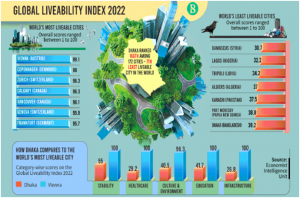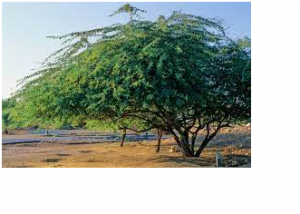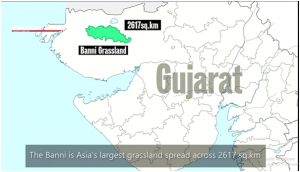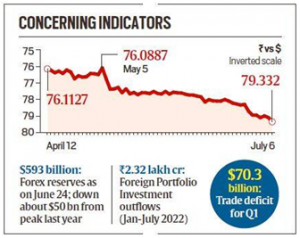THE INDIAN POLITY AND GOVERNANCE
1. WHY DOES RAJYA SABHA HAVE ‘NOMINATED’ MPS, AND WHO GETS NOMINATED?
THE CONTEXT:The government on nominated musician Ilaiyaraaja, track-and-field icon PT Usha, Telugu screenwriter V Vijayendra Prasad, and philanthropist and spiritual leader Veerendra Heggade to Rajya Sabha. The four new entrants to Rajya Sabha belong to four southern states, Tamil Nadu, Kerala, Andhra Pradesh, and Karnataka.
THE EXPLANATION:
Ilaiyaraaja, Usha, Prasad, and Heggade will serve until July 2028. The Upper House of Parliament now has nine nominated members — the other five being lawyer Mahesh Jethmalani, dancer Sonal Mansingh, politician Ram Shakal, author and columnist Rakesh Sinha, and former Chief Justice of India Ranjan Gogoi. Three nominated positions are currently vacant.
What does the Constitution say about nominated members?
• Article 80 of the Constitution (“Composition of the Council of States”) says “The Council of States shall consist of (a) twelve members to be nominated by the President in accordance with the provisions of clause (3); and (b) not more than two hundred and thirty-eight representatives of the States and of the Union territories.”
• Clause 3 of the article layer down the qualifications for the appointment: “The members to be nominated by the President…shall consist of persons having special knowledge or practical experience in respect of such matters as the following, namely:—
o Literature, science, art and social service.”
• Since Rajya Sabha was constituted in 1952, a total 142 individuals have been nominated as its members. The list includes scholars, jurists, educationists, historians, scientists, litterateurs, journalists, engineers, economists, administrators, artistes, sportspersons, social workers, and politicians, mostly with loyalty to the government of the day.
What is the role of nominated members?
• Nominated members of Rajya Sabha enjoy all the powers and privileges to which the elected MPs are entitled. They can take part in the proceedings of the House in the normal manner, even though there has been criticism that several nominated members have poor attendance and do not appear to show much interest in legislative work.
• In this context, cricketer Sachin Tendulkar, actor Rekha, and businesswoman Anu Aga have faced criticism in recent years.
• Nominated members are not allowed to vote in the election of the President.They do have the right to vote in the election of the Vice-President, however.
ADD TO YOUR KNOWLEDGE
Why are members nominated to the Rajya Sabha?
• Pitching for a provision in the Constitution to allow eminent persons to be nominated to the Council of States, N Gopalaswami Ayyangar, who was part of the Constitution Drafting Committee, said: “We also give an opportunity, perhaps, to seasoned people who may not be in the thickest of the political fray, but who might be willing to participate in the debate with an amount of learning and importance which we do not ordinarily associate with the House of the People (Lok Sabha).”
• The first list of 12 Presidential nominees perfectly represented this sentiment: Zakir Hussain, who later became the President of India; historians Kalidas Nag and Radha Kumud Mookerji; the eminent Hindi poet Maithilisharan Gupt; Gandhian author Kakasaheb Kalelkar; scientist Satyendranath Bose; social worker N R Malkani; danseuse Rukmini Devi Arundale; Gandhian scholar J M Kumarappa; jurist Alladi Krishnaswami; actor Prithviraj Kapoor; and medical scientist Major General S SSokhey.
2. EXPLAINED: A SHORT HISTORY OF THE DEMAND FOR ‘DRAVIDA NADU’, ITS EVOLUTION
THE CONTEXT:A recent controversial statement by the MP in Tamil Nadu triggered criticism for demanding “Dravida Nadu”.
THE EXPLANATION:
- E V Ramasamy ‘Periyar’ (1879-1973) had started the Self Respect Movement to “redeem the identity and self-respect” of Tamils. He envisaged an independent Dravida homeland of Dravida Nadu, comprising Tamil, Malayalam, Telugu and Kannada speakers, and launched a political party, Dravidar Kazhagam (DK), to pursue this goal.
C N Annadurai (1909-1969) was the last Chief Minister of Madras state, and the first Chief Minister of Tamil Nadu. He founded the Dravida Munnetra Kazhagam (DMK) after breaking with Periyar which ultimately chose to go slow on the demand for an independent Dravida Nadu and instead worked for greater autonomy for Tamil Nadu and better cooperation among the southern states.
The demand for Dravida Nadu
• The movement for a separate Dravida country has passed through several stages and meanings. The early 20th century agitations against the colonial government of Madras state (of which, along with Tamil Nadu, portions of modern-day Andhra Pradesh, Karnataka, and Kerala were part) often included expressions of regional aspirations.
century agitations against the colonial government of Madras state (of which, along with Tamil Nadu, portions of modern-day Andhra Pradesh, Karnataka, and Kerala were part) often included expressions of regional aspirations.
• The South Indian Liberal Federation, popularly known as Justice Party, which was founded in 1917 by Sir Pitti Theagaraya Chetty, Dr T M Nair, and Dr C Natesa Mudaliar, was the first to raise the flag of anti-Brahminism, and oppose the caste system that put Brahmins at the top of the social hierarchy.
• At the time, the presence of Brahmins in the Madras government was disproportionately higher than their population in the state, and the Justice Party demanded opportunities for those lower in the caste hierarchy.
• Periyar, the founder of the Self-Respect Movement (1925), was both anti-caste and anti-religion. He advocated major social reforms, including equality for women in society, and supporting birth control for women for their health and well-being. He also opposed the domination of Hindi and emphasised the distinct cultural identity of the Tamil nation.
Legal Picture for such Statement:
• To control such secessionist threats, through the 16th Amendment, the words “the sovereignty and integrity of India” were added to Article 19(2) of the Constitution. After this amendment, raising such secessionist threats became unconstitutional and illegal.
• Article 19 of the Indian Constitution ensures freedom of speech and expression but to curb such secessionist threats, a restriction was added through the 16th amendment, as inserted in Article 19 (2), “Nothing…..shall affect the operation of any existing law, or prevent the State from making any law, in so far as such law imposes reasonable restrictions on the exercise of the right conferred…..In the interests of the sovereignty and integrity of India, the security of the State, friendly relations with foreign States, public order, decency or morality or in relation to contempt of court, defamation or incitement to an offence.”
• The 16th amendment, also called the anti-secession bill, banned secessionist advocacy and was a clear warning to secessionists like Anna who had to suspend the demand for a separate country.
• Also, as explained by the Supreme Court of India and many legal experts, calling for “freedom of a state/UT” verbally is not a crime until it is followed by violence and related action on the ground.
The 16th amendment Act of 1963:
The Sixteenth Amendment Act of 1963 has two provisions as follows:
1. Empowered the state to impose further restrictions on the rights to freedom of speech and expression, to assemble peacefully and to form associations in the interests of sovereignty and integrity of India.
2. Included sovereignty and integrity in the forms of oaths or affirmations to be subscribed by contestants to the legislatures, members of the legislatures, ministers, judges and CAG of India.
3. THE GLOBAL LIVEABILITY INDEX 2022
THE CONTEXT:The European Intelligence Unit (EUI) recently released the Global Liveability Index 2022. It ranked 173 cities on the basis of their liveability or living conditions, which was determined by five factors — stability, healthcare, culture and environment, education, and infrastructure.
THE EXPLANATION:
About the Economist Intelligence Unit(EIU)
The Economist Intelligence Unit (EIU) was created in 1946. It is the research and analysis division of The Economist Group and the world leader in global business intelligence.
• For the first time, included five Indian cities; Delhi, Mumbai, Chennai, Ahmedabad, and Bangalore.
• All five scored poorly, ranked between 140 and 146. Delhi was ranked the best at 140, followed by Mumbai at 141, Chennai and Ahmedabad at 142 and 143 respectively. Bangalore scored the least out of the five Indian cities, ranking 146th with a score of 54.4 out of 100. This came as a shocker after the silicon valley of India topped the ‘Ease of Living Index 2020’, which was released by the Ministry of Housing and Urban Affairs.
• The city received a score of 46.4, out of 100, in infrastructure. This score is the lowest among all Indian cities. Pakistan’s largest city Karachi was one of the five least livable cities in the world in the index, but it has still scored better than the IT capital of India in terms of infrastructure. The Silicon Valley of India scored equal to Lagos in Nigeria, the third-least livable city in the world, in terms of infrastructure.
• The infrastructure score is based on the quality of roads, public transportation system, international links, energy provision, telecommunications, water, and availability of good quality housing.
• When ranking, out of the five factors, the EUI attaches the highest weightage to stability and culture and environment, which account for 25% each. It is followed by healthcare and infrastructure with 20% each and education with 10%.
• The most livable city according to the index is Vienna. Western European cities along with a few Canadian cities dominate the top ten ranks. The Syrian capital, Damascus is the least livable city in the world.

THE ENVIRONMENT, ECOLOGY AND CLIMATE CHANGE
4. RESTORING BANNI GRASSLANDS, GUJARAT BATTLES INVASIVE TREE SPECIES
THE CONTEXT:Recently, Gujarat forest department said that they will restore 10,000 hectares of the Banni grasslands in the coming year, and every year in the coming decade.
THE EXPLANATION:
• The state plans on restoring at least 76,000 hectares of this 2,497 sq km grassland which is a high-biodiversity area — it has already restored 10,000 hectares over the past couple of years.
• The Banni grassland was also flagged by Prime Minister, in his keynote speech at the United Nations High Level Dialogue on Desertification, Land Degradation and Drought last year, as part of India’s endeavour to reach the target of restoring 26 million hectares of degraded land by 2030.
• The grasslands of Gujarat constitute about 4.33 per cent (8,490 sq km) of the total geographical area, distributed in eight districts and three different climatic regions — Kutch, Saurashtra and central Gujarat. A majority of grasslands in Gujarat (41 per cent) are found in the Kutch district. Banni grassland was declared a Protected Forest in 1955, under the Indian Forest Act, 1927.
Variety of Species
Besides having 40 species of grass and 99 species of flowering plants, Banni is also home to the Indian wolf, jackal, Indian fox, desert fox, desert cat, caracal, hyena, chinkara, Nilgai, wild boar, Indian hare, common monitor lizard — and the cheetah before it became extinct.Banni also has 273 bird species and in years of good rainfall, is home to thousands of migratory birds.
Indian fox, desert fox, desert cat, caracal, hyena, chinkara, Nilgai, wild boar, Indian hare, common monitor lizard — and the cheetah before it became extinct.Banni also has 273 bird species and in years of good rainfall, is home to thousands of migratory birds.
Invasive Alien Species
• On analysis of the data over last four decades, it was found that in the year 1989, the area was dominated with grasslands covering 54.57 per cent of the area followed by saline areas devoid of vegetation or sparsely distributed vegetation covering 27.30 per cent and Prosopis Juliflora, an alien invasive species, covering only 15.72 per cent of the area.
• The Land Use Land Cover (LULC) assessment of the grassland over a 10 years interval revealed that grassland areas over the period gradually reduced while in the same period Prosopis Juliflora dominant area increased encroached to more than 30 per cent.
• Therefore, within a gap of 20 years, the Prosopis Juliflora dominant areas doubled in Banni,” stated the project proposal of the Gujarat forest department.
• According to Environmentalists “The grasslands have native trees like Acacia nilotica, Salvadora persica and Capparis decidua which are protected under Section 26 in the Indian Forest Act, 1927. These have been destroyed to grow fodder.
• Banni has sensitive soil ecology where the sweet soil rests on salinity only 2 to 3 metres below the ground and any disturbance of the soil brings up salinity destroying the rich productivity of the land”.

VALUE ADDITION:
What is Invasive Alien species?
• Invasive alien species are plants, animals, pathogens and other organisms that are non-native to an ecosystem, and which may cause economic or environmental harm or adversely affect human health.
• In particular, they impact adversely upon biodiversity, including decline or elimination of native species – through competition, predation, or transmission of pathogens – and the disruption of local ecosystems and ecosystem functions.
THE ECONOMIC DEVELOPMENT
5. TO STEM RUPEE SLIDE, BOOST FOREX INFLOWS, RBI EASES FPI, NRI DEPOSIT NORMS
THE CONTEXT:The Reserve Bank of India (RBI) announced a series of measures, including relaxation in foreign investment in debt, external commercial borrowings, and Non-Resident Indian (NRI) deposits to prevent the slide in the rupee and shore up foreign exchange reserves.
THE EXPLANATION:
• With the rupee depreciating 4.1 per cent to 79.30 against the US dollar in the current financial year till, FPIs (foreign portfolio investors) pulling out Rs 2.32 lakh crore in six months, and $50 billion being shaved off forex reserves over the last nine months (2022), the measures are expected to further diversify and expand the sources of forex funding, mitigate volatility, and dampen global spillovers.
(foreign portfolio investors) pulling out Rs 2.32 lakh crore in six months, and $50 billion being shaved off forex reserves over the last nine months (2022), the measures are expected to further diversify and expand the sources of forex funding, mitigate volatility, and dampen global spillovers.
• The RBI said it has been closely and continuously monitoring the liquidity conditions in the forex market and has stepped in as needed in all segments to alleviate dollar tightness with the objective of ensuring orderly market functioning.
• While India’s foreign exchange reserves stood at US$ 593.3 billion on June 24, 2022, the new measures are expected to boost inflows as nearly a third of India’s external debt of $ 621 billion will be due for maturity in the coming months.
• In a significant move, RBI has allowed banks temporarily to raise fresh Foreign Currency Non-Resident Bank i.e., FCNR(B) and Non-Resident External (NRE) deposits without reference to the current regulations on interest rates, with effect from July 7. This relaxation too will be available till October 31, 2022.
• The RBI decided to increase the limit under the automatic route for external commercial borrowing (ECB) from $ 750 million or its equivalent per financial year to $ 1.5 billion. The all-in cost ceiling under the ECB framework is also being raised by 100 basis points, subject to the borrower being of investment grade rating.
• In another measure, the RBI has decided that category one banks can utiliseoverseas foreign currency borrowing (OFCBs) forlending in foreign currency to entities for a wider set of end-use purposes, subject to the negative list set out for external commercial borrowings (ECBs). The measure is expected to facilitate foreign currency borrowing by a larger set of borrowers who may find it difficult to directly access overseas markets.
VALUE ADDITION:
EXTERNAL COMMERCIAL BORROWING (ECB):
• It is a commercial loan raised by an eligible resident entity from recognised non-resident entities.
• These foreign sources could be:
1. Commercial bank loans
2. Buyers’ credit and suppliers’ credit
3. Securitised instruments such as Floating Rate Notes and Fixed Rate Bonds etc.
4. Credit from official export credit agencies and commercial borrowings from the private sector window of Multilateral Financial Institutions.
• Commercial borrowings account for the largest component of India’s external debt.
THE PRELIMS PERSPECTIVE
5. ONE WORD A DAY- TIHAN
THE CONTEXT:Union Minister of State (Independent Charge) Science & Technology inaugurated first-of-its-kind, state-of-the-art “Autonomous Navigation” facility to develop unmanned ground and aerial vehicles in the IIT Hyderabad campus- “Technology Innovation Hub on Autonomous Navigation” or TiHAN.
THE EXPLANATION:
It is seen as one of the steps toward India’s vision of ‘Atmanibhar Bharat’, ‘Skill India’ and ‘Digital India’.
What is TiHAN?
• Funded by the Union Ministry of Science & Technology at a budget of Rs 130 crore, the “Technology Innovation Hub on Autonomous Navigation” is a multidisciplinary initiative, which aims at making India a global player in the futuristic and next-generation “Smart Mobility” technology.
• The multi-departmental initiative includes researchers from electrical, computer science, mechanical and aerospace, civil, mathematics, and design at IIT-H. There is also collaboration and support from reputed institutions and industry.
• The focus will be on solving various challenges hindering the real-time adoption of unmanned autonomous vehicles for both terrestrial and aerial applications.
• It will facilitate research grounds to investigate the functioning of unmanned and connected vehicles in a controlled environment by replicating different situations.
• It should be noted that there is no such testbed facility in India to evaluate the autonomous navigation of vehicles.
• TiHAN aims to fill this gap by developing a fully functional and exemplary testbed facility dedicated to connected autonomous vehicles (CAVs).
THE PRELIMS PRACTICE QUESTIONS
QUESTION OF THE DAY
Q. Which of the following statements is incorrect with respect to TiHAN?
a) It is the state-of-the-art facility at IIT-Hyderabad.
b) It is funded by Ministry of Education in collaboration with reputed institutions and industry.
c) It is a body scanning mechanism developed by IIT Madras
d) It is term seen in news related to automation navigation.
ANSWER FOR 6TH JULY 2022
ANSWER: A
EXPLANATION:
Nairobi Flies:
• Usually flies do not bite, but if disturbed while sitting on anyone’s skin, they release a potent acidic substance that causes burns.
• This substance is called pederin, and can cause irritation if it comes in contact with the skin, leading to lesions or unusual marks or colouring on the skin. The skin begins to heal in a week or two, but some secondary infections can occur, especially if the victim scratches the irritated skin.


